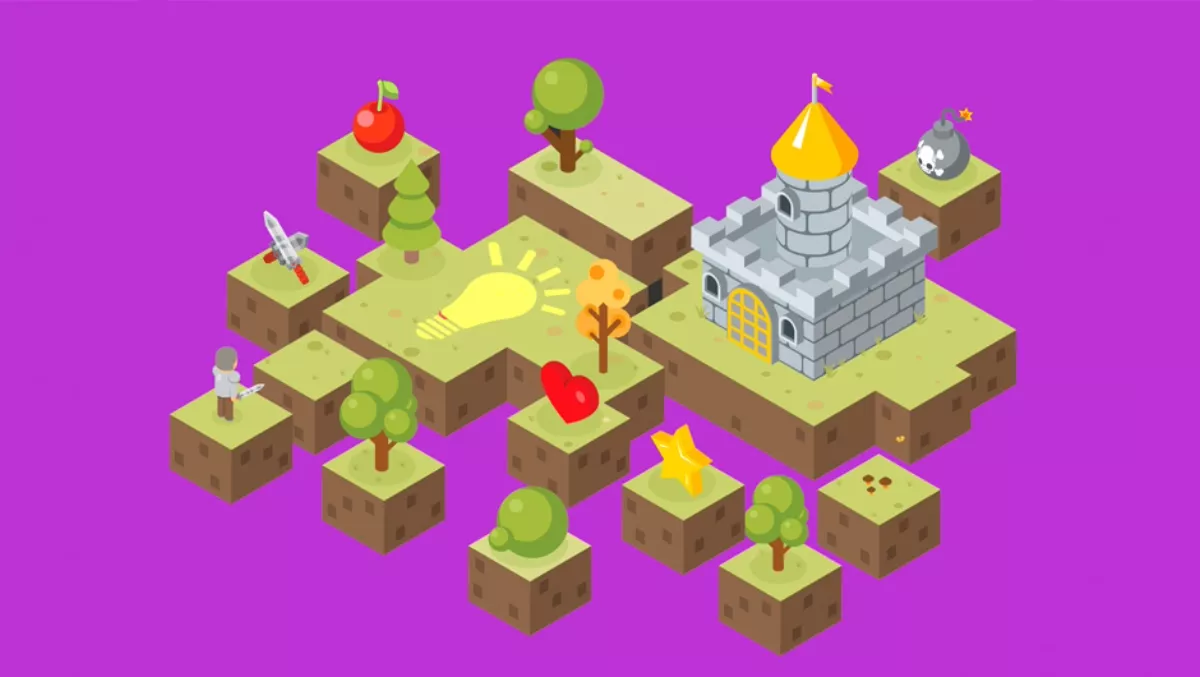
Hamilton Boys' High recently had a visit from Company-X's resident robot expert to see if he could inspire the students there to consider tech. What he found was a creative spark that inspired him in return.
Marcel van de Steeg, usually a programmer at Hamilton based software developer Company-X, took up the mantle of a visiting teacher to give them an insider's guide to the software industry.
Van de Steeg says the visits went well and he enjoyed working with teachers to give the students a taste of how exciting tech can be.
“It was all about getting in front of the next generation of developers, and giving them a taste of what it's like in the real world. I talked about topics that were relevant to their game projects, a little about career options, and I specifically focused on the concept of scope.
During his visit, Marcel spoke with students about project management, scope and the logistics of releasing a game into the wild. As the students are about to set off on their own coding journeys, the advice from an industry expert will hopefully help them in their projects.
Van de Steeg says he's happy to help prepare students for this kind of project as he knows what it's like.
“The teachers were really happy with that focus, since learning about scope and how to control it is a good skill to have, and not just for game development.
“The students only had approximately 20 hours, or so, to make a game. Learning how to cut features so that they could finish their games in the allotted time was an important part of that.
The highlight of working with the students was seeing ideas take hold, and that flicker of creativity light up for them, says van de Steeg.
“Lighting a spark. Seeing kids take to the idea of making games and watching them come up with lots of neat ideas and concepts and drawings for their games.
“Amazing stuff. Love it. That's what you do it for, to see that spark of creativity and imagination.
It's important to get out into classrooms like this, says van de Steeg. It's an opportunity to prepare them for the digital future.
“It's all about preparing these kids for the future, and more importantly, giving them some hands-on experience with it. Just abstract stuff on a screen is not going to work for all the students. They need to see something physical and be able to interact with it and connect it to what they see on the screen.
He says not to discount video games as a vessel for learning, the educational possibilities are more important than the gamer stigma.
“I think it's a fun way to prepare and inspire the next generation of developers. Making computer games might seem a bit frivolous, but it's a good way to capture kid's interest and engage them, and a lot of the skills required are applicable in real life.
Van de Steeg has been writing code since he was seven-years-old and has recently started making robots in his spare time and realised the learning potential they held.
“The key change there was that the components needed to build a robot have become cheap and accessible, and after watching videos of people building robots I figured I'd give it a go. Once I started working on these robots, I realized they would be great tools for teaching kids about robots and programming them.
Company-X director David Hallett says the visits came about thanks to collaboration with the Secondary School-Employer Partnership, which is led by Smart Waikato Business Network.
Hallett says it's important for companies like theirs to be out connecting with young people, as they are the industry's future.
“We strongly believe in engaging with, and contributing to, the community where we live and work.
“One of the best ways of tackling the shortage of IT graduates is by inspiring those about to make a choice of what to study. How better to answer their questions about whether IT is a career path they wish to follow than by sending a developer, like Marcel, along to the classroom.
Van de Steeg says he has plans to go on some more class visits at a local primary school, where he'll be introducing some more clever tech.
“One of the classes has been marked as a showcase STEM class, and the teacher has asked for some help with this.So I'll be doing some activities with the kids around Makey Makey, programming in Scratch and robots.
“The primary school students are amazing, they come up with all sorts of fantastic ideas.
The next robot van de Steeg plans to make will hopefully revolutionise biscuit dunking, at least in his home.
“It's a voice-controlled biscuit dunking robot called Becky. It looks like a giant awkward red bird with googly eyes.
“So in theory I should be able to say, "Becky, a gingernut, two lumps of sugar and one dunk please," and the robot will go and do that. Drop two sugarcubes in my cup, then pickup the correct type of biscuit, dunk it in my cuppa tea and then place the biscuit in my mouth. The wonders of end to end tea automation.